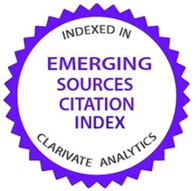La guerra irregular, insurgencias y cómo contrarrestarlas
Una perspectiva comparativa entre los enfoques centrados en el enemigo y en la población
DOI:
https://doi.org/10.21830/19006586.497Palabras clave:
Clausewitz; COIN; contrainsurgencia centrada en el enemigo; contrainsurgencia centrada en la población; estrategia; guerra contemporánea; guerra irregular; guerras pequeñasResumen
Este artículo toma el debate actual entre los enfoques centrados en el enemigo y los centrados en la población como un punto de partida para hacer su contribución, cambiando el enfoque del ámbito operacional y táctico al estratégico. Con este fin, rastrea los significados de cada enfoque desde sus orígenes históricos, discutiendo los fundamentos teóricos para destilar los principios básicos y evaluar hasta qué punto cada uno es adecuado para contrarrestar una insurgencia. El argumento central de este artículo es que, si bien ambos enfoques tienen “filosofías” diferentes, son dos caras de la misma moneda. Por lo tanto, lo que se debe tener en cuenta es la dimensión estratégica y, lógicamente, la política, al referirse a la contrainsurgencia ya que los dos serán determinantes en el enfoque que se emplee.
Descargas
Referencias bibliográficas
Álvarez Calderón, C. & Rodríguez Beltrán, C. (2018). Ecosistemas criminales. Revista Científica General José María Córdova, 16(24), 1-30. https://doi.org/10.21830/19006586.352
Arreguín-Toft, I. (2001). How the Weak Win Wars: A Theory of Asymmetric Conflict. International Security, 26(1), 93-128.
Arreguín-Toft, I. M. (2005). How the weak win wars : a theory of asymmetric conflict. New York: Cambridge University Press.
Azam, J., Hoeffler, A. (2002). Violence Against Civilians in Civil Wars: Looting or Terror?. Journal of Peace Research, 39(4), 461-485.
Beckett, I. F. W. (2007). Victory, Counter-Insurgency and Iraq. In J. Angstrom and I. Duyvesteyn (Eds.), Understanding Victory and Defeat in Contemporary Warfare (pp. 77-93). New York: Routledge.
Bimberg, E. L. (1999). The Moroccan Goums: Tribal Warriors in a Modern War. Westport, CT: Greenwood Press.
Brocades Zaalberg, T. (2012). Counterinsurgency and Peace Operations. In P. B. Rich and I. Dyuvensteyn (Eds.), The Routledge Handbook of Insurgency and Counterinsurgency (pp. 80-97). New York: Routledge.
Brumwell, S. (2005). White Devil: A True Story of War, Savagery, and Vengeance in Colonial America. Cambridge, MA: De Capo Press.
Bullard, R. L. (1910). Military Pacification. Journal of the Military Service Institute of the United States, 46, 1-24.
Byman, D. (2016). ‘Death Solves All Problems’: The Authoritarian Model of Counterinsurgency. Journal of Strategic Studies, 39(1), 62-93. https://doi.org/10.1080/01402390.2015.1068166
Callwell, C. E. (1906/1996). Small Wars: Their Principles and Practice (3rd ed.). Lincoln, NB: University of Nebraska Press.
Céspedes del Castillo, G. (2009). América Hispánica, 1492-1898. Madrid: Marcial Pons Historia.
Cohen, E., Horvath, J. and Nagl, J. (2006). Principles, Imperatives and Paradoxes of Counterinsurgency. Military Review, 86(2), 49-53.
Crane, C. (2010). United States. In T. Rid and T. Keaney (Eds.), Understanding Counterinsurgency: Doctrine, Operations and Challenges (pp. 59-72). New York: Routledge.
De Durand, E. (2010). France. in T. Rid and T. Keaney (Eds.), Understanding Counterinsurgency: Doctrine, Operations and Challenges (pp. 11-27). New York: Routledge.
Ellis, E.H. (1921/2015). Bush Brigades. In B. Friedman (Ed.), 21st Century Ellis: Operational and Strategic Prophecy for the Modern Era (pp. 17-32), Annapolis, MD: Naval Institute Press.
Fernandez-Osorio, A. (2017). The Participation of Colombia in United Nations’ Multidimensional Peace Operations. Journal of International Peacekeeping, 21(1-2), 83-124. https://doi.org/10.1163/18754112-02101003
Fernandez-Osorio, A., Cufiño Gutierrez, F., Gomez Diaz, C. & Tovar Cabrera, G. (2019). Dynamics of State Modernization in Colombia: The Virtuous Cycle of Military Transformation. Democracy and Security, 15(1), 75-104. https://doi.org/10.1080/17419166.2018.1517332
Finel, B. (2010). A Substitute for Victory: Adopting a New Counterinsurgency Strategy in Afghanistan. Foreign Affairs. Retrieved from https://www.foreignaffairs.com/articles/afghanistan/2010-04-08/substitute-victory
Freedman, L. (2013). Strategy – A History. New York: Oxford University Press.
Galula, D. (1964/2006). Counterinsurgency Warfare: Theory and Practice. Westport, CT: Praeger.
Gentile, G. P. (2009). The selective use of history in the development of American counterinsurgency doctrine. Army History, 72, 21-35.
Gentile, G. P. (2013). Wrong Turn: America’s Deadly Embrace of Counterinsurgency. New York: The New Press.
Gray, C. S. (2006a). Irregular Enemies and the Essence of Strategy: Can the American Way of War Adapt. Carlisle, PA: Strategic Studies Institute.
Gray, C. S. (2006b). Another Bloody Century: Future Warfare. London: Orion Books Ltd.
Gray, C.S. (2007). Irregular Warfare, One Nature, Many Characters. Strategic Studies Quarterly, 1(2), 35-57.
Gray, C. S. (2010). The Strategy Bridge: Theory for Practice. New York: Oxford University Press.
Gray, Colin (2012a). Categorical Confusion? The Strategic Implications of Recognizing Challenges either as Irregular or Traditional. Carlisle, PA: Strategic Studies Institute.
Gray, C. S. (2012b). Concept Failure? COIN, Counterinsurgency, and Strategic Theory. Prism, 3(3), 17-32.
Greenhill, K. M. and Staniland, P. (2007). Ten Ways to Lose a Counterinsurgency. Civil Wars, 9(4), 402-419.
Hack, K. (2009). The Malayan Emergency as Counter-insurgency Paradigm. Journal of Strategic Studies, 32(3), 383-414.
Hack, K. (2015). The Malayan Emergency: British Counterinsurgency Phases and the Triumph of Geo- Demographic Control, 1948–60. In G. Fremont-Barnes (Ed.), A History of Counterinsurgency: From South Africa to Algeria, 1900 to 1950, Vol. 1. (pp. 125-176). Santa Barbara, CA: Praeger Security International.
Heuser, B. (2010). The Evolution of Strategy: Thinking War from Antiquity to Present. Cambridge: Cambridge University Press.
Joes, A. J. (1996). Guerrilla Warfare: A Historical, Biographical and Bibliographical Sourcebook. Westport, CT: Greenwood Press.
Kalyvas, S. N. (2006). The Logic of Violence in Civil War. New York: Cambridge University Press.
Kilcullen, D. J. (2005). Countering Global Insurgency. Journal of Strategic Studies 28.
Kilcullen, D. J. (2007). Two Schools of Classical Counterinsurgency. Small Wars Journal Blog. Retrieved from http://smallwarsjournal.com/blog/two-schools-of-classical-counterinsurgency
Kilcullen, D. J. (2009). The Accidental Guerrilla: Fighting Small Wars in the Midst of a Big One. London: C. Hurst.
Kilcullen, D. J. (2010). Counterinsurgency. New York: Oxford University Press.
Kiras, J. D. (2009). Irregular Warfare: Terrorism and Insurgency. In J. Baylis, J. J. Wirtz and C. S. Gray (Eds.), Strategy in the Contemporary World: An Introduction to Strategic Studies, 3rd Ed. (pp. 185-207). Oxford: Oxford University Press.
Kiss, P. A. (2014). Winning Wars Amongst the People: Case Studies in Asymmetric Conflict. Lincoln, NB: Potomac Books, University of Nebraska Press.
Kissinger, H. (1969). The Vietnam Negotiations. Foreign Affairs, 47(2). Retrieved from https://www.foreignaffairs.com/articles/asia/1969-01-01/viet-nam-negotiations
Kitson, F. (1971). Low Intensity Operations: Subversion, Insurgency and Peacekeeping. London: Faber and Faber.
Liddell Hart, B. H. (1941/1954). The Strategy of Indirect Approach. London: Faber and Faber.
Lyall, Ja. (2009). Does Indiscriminate Violence Incite Insurgent Attacks? Evidence from Chechnya. Journal of Conflict Resolution, 53(3), 331-362.
Mack, A. (1975). Counterinsurgency in the Third World: Theory and Practice. British Journal of International Studies, 1(3), 226-253. https://doi.org/10.1017/S0260210500116791
Melton, S. L. (2013). Aligning FM 3-24 Counterinsurgency with Reality. Small Wars Journal. Retrieved from https://smallwarsjournal.com/jrnl/art/aligning-fm-3-24-counterinsurgency-with-reality
Mumford, A. (2012). The Counter-Insurgency Myth: The British Experience of Irregular Warfare. London: Routledge.
Nagl, J. (2005). Learning to Eat Soup with a Knife: Counterinsurgency Lessons from Malaya and Vietnam. Chicago: The University of Chicago Press.
NATO (2003). AJP-3.4.4, Allied Joint Doctrine for Counterinsurgency (COIN). Brussels: North Atlantic Treaty Organization.
NATO (2009). AJP-3.4.4, Allied Joint Doctrine for Counterinsurgency (COIN). Brussels: North Atlantic Treaty Organization.
Olusoga, D. and Erichsen, C. W. (2010). The Kaiser’s Holocaust: Germany’s Forgotten Genocide and the Colonial Roots of Nazism. London: Faber & Faber Ltd.
Palma Morales, O. (2012). La discusión sobre la relación entre antinarcóticos y contrainsurgencia: ideas para la construcción de un marco teórico diferente. Revista Científica General José María Córdova, 10(10), 49-62. https://doi.org/10.21830/19006586.226
Porch, D. (1986). Bugeaud, Galliéni and Lyautey: The Development of French Colonial Warfare. In P. Paret (Ed.), Makers of Modern Strategy: From Machiavelli to the Nuclear Age (pp. 376-407). Princeton: Princeton University Press.
Porch, D. (2013). Counterinsurgency: Exposing the Myths of the New Way of War. New York: Cambridge University Press.
Record, J. (2007). Beating the Goliath: Why Insurgents Win. Dulles: Potomac Books, Inc.
Rid, T. (2009). Razzia: A Turning Point in Modern Strategy. Terrorism and Political Violence 21(4), 617-635.
Rid, T. (2010). The Nineteenth Century Origins of Counterinsurgency Doctrine. Journal of Strategic Studies, 33(5), 727-758.
Serrano Alvarez, J. M. (2018). El paradigma de la guerra en el siglo XX. Revista Científica General José María Córdova, 16(23), 23-42. https://doi.org/10.21830/19006586.305
Smith, H. A. (1920). Military Government. Fort Leavenworth, KS: The General Service Schools Press.
Smith, M.L.R., Jones, D. (2015). The Political Impossibility of Modern Counterinsurgency. New York: Columbia University Press.
Sullivan, A. T. (1985). Thomas-Robert Bugeaud, France and Algeria, 1784-1849: Politics, Power and the Good Society. Proceedings of the Meeting of the French Colonial Historical Society 8, 149-159.
Thompson, R. (1966/2014). Defeating Communist insurgency: Experiences from Malaya and Vietnam. London: Macmillan.
Tse-Tung, M. (1937/2005). On Guerrilla Warfare. (S. B. Griffith Trans.). Mineola, NY: Dover Publications, Inc.
Valentino, B., Huth, P., Balch-Lindsay, D. (2004). Draining the Sea: Mass Killing and Guerrilla Warfare. International Organization, 58(2), 375-407.
Von Clausewitz, C. (1976). On War. (M. Howard, P. Paret Trans.). New York: Oxford University Press.
Ward Gventer, C., Jones, D., Smith, M.L.R. (2014). The New Counterinsurgency Era in Critical Perspective. New York: Palgrave Macmillan.
United States Department of the Army (2004). Field Manual Interim 3.07-22 Counterinsurgency Operations, Washington, DC: Department of the Army. Retrieved from https://www.fas.org/irp/doddir/army/fmi3-07-22.pdf
United States Department of the Army (2008/2009). The U.S. Army Stability Operations Field Manual: U.S. Army Field Manual No. 3-07, Ann Arbor, MI: University of Michigan Press.
United States Joint Chiefs of Staff (2011), Joint Publication 3-07 Stability Operations, Washington, DC: U.S. Joint Chiefs of Staff. Retrieved from http://www.dtic.mil/doctrine/new_pubs/jp3_07.pdf
United States Joint Chiefs of Staff (2018). Joint Publication 3-24 Counterinsurgency (JP 3-24). Retrieved from https://fas.org/irp/doddir/dod/jp3_24.pdf
Utley, H. H. (1931). An Introduction to the Tactics and Technique of Small Wars. Marine Corps Gazette, 15(5), 50-54.
Worral, J. (2014). Bringing the Soil Back in: Control and Territoriality in Western and Non-Western COIN. In C. W. Gventer, D. M. Jones and M.L.R. Smith (Eds.), The New Counter-insurgency Era in Critical Perspective (pp. 97-133). New York: Palgrave Macmillan.
Wylie, J. C. (1967/2014). Military Strategy: A General Theory of Power Control. Annapolis, MD: Naval Institute Press.
Descargas
Publicado
Cómo citar
Número
Sección
| Estadísticas de artículo | |
|---|---|
| Vistas de resúmenes | |
| Vistas de PDF | |
| Descargas de PDF | |
| Vistas de HTML | |
| Otras vistas | |

























